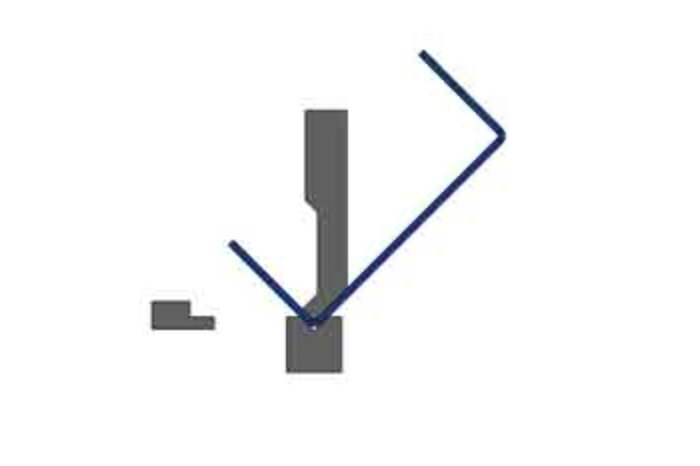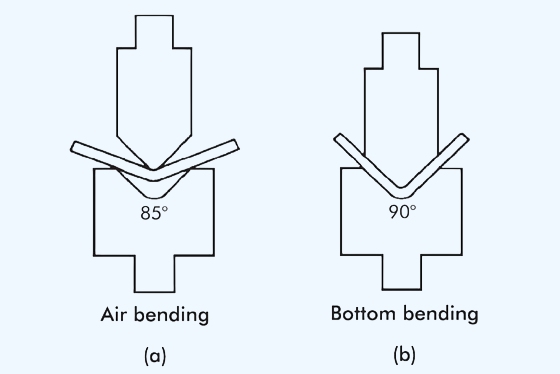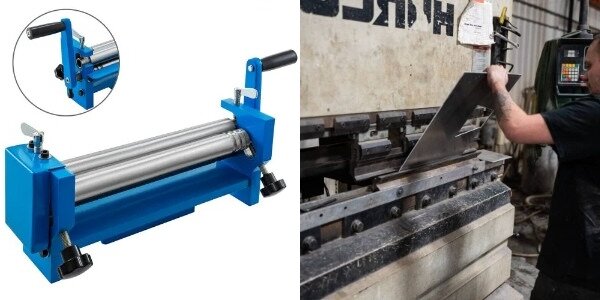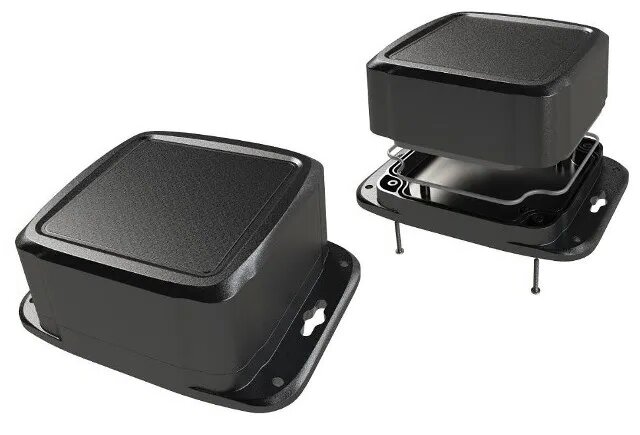Nella progettazione dei prodotti, i produttori devono spesso affrontare la sfida di produrre parti metalliche complesse in grandi quantità senza perdere precisione o rallentare la produzione. Lo stampaggio progressivo aiuta a risolvere questo problema. Offre un metodo economico per produrre pezzi metallici di alta qualità in modo rapido ed efficiente.
Lo stampaggio progressivo può migliorare i tempi di produzione e la qualità dei prodotti. Continuate a leggere per scoprire come funziona questo processo e come potrebbe adattarsi al vostro prossimo progetto.
Che cos'è lo stampaggio progressivo?
Lo stampaggio a matrice progressiva è un processo a più fasi che utilizza un singolo stampo per eseguire varie operazioni su una striscia di metallo. Ogni operazione avviene per fasi, con il materiale che avanza attraverso lo stampo. Ciò consente ai produttori di creare pezzi complessi in modo efficiente e ad alta velocità di produzione.
Il processo inizia con l'inserimento di una striscia di metallo nella pressa. Lo stampo esegue una serie di azioni, come la punzonatura, il taglio o la piegatura. Mentre il nastro si muove attraverso lo stampo, subisce queste operazioni in sequenza. Quando il nastro esce dallo stampo, viene trasformato nel pezzo desiderato.
Materiali comunemente utilizzati nella tranciatura progressiva
Nella tranciatura progressiva possono essere utilizzati diversi materiali, scelti in base ai requisiti del pezzo. I materiali più comuni sono:
- Acciaio: L'acciaio è comunemente utilizzato nelle parti di automobili e macchinari pesanti per la sua resistenza e durata.
- Alluminio: Noto per le sue proprietà di leggerezza e resistenza alla corrosione, l'alluminio è ideale per le applicazioni aerospaziali ed elettroniche.
- Acciaio inox: Offre un'elevata resistenza alla corrosione e alla forza, rendendola perfetta per settori come i dispositivi medici e la lavorazione degli alimenti.
- Ottone e Rame: Questi materiali sono utilizzati per la loro eccellente conduttività, che li rende popolari nell'elettronica e nei componenti elettrici.
Cosa compone uno stampo progressivo?
Uno stampo progressivo è come una catena di montaggio all'interno di una pressa. Ogni parte ha un compito specifico: modellare il metallo con precisione. Vediamo i pezzi principali.
Stazioni di stampaggio
Pensate alle stazioni come alle postazioni di lavoro di una fabbrica. La striscia di metallo passa attraverso ognuna di esse, ottenendo una nuova caratteristica a ogni fermata. Le prime stazioni possono praticare dei fori, mentre quelle successive piegano o tagliano la forma finale.
Fustelle e stampi
- Punzoni sono le parti mobili che spingono nel metallo.
- Muore sono le parti fisse che modellano il metallo dal basso.
- Insieme, tagliano, piegano o formano il materiale a ogni colpo di pressa.
Piastre spogliarelliste
Dopo che il punzone ha perforato il metallo, la piastra di spellatura lo tira fuori. In questo modo la striscia rimane piatta ed evita che si attacchi al punzone.
Piloti
Questi piccoli perni allineano il nastro metallico tra le stazioni. Assicurano che ogni operazione sia perfettamente allineata per ottenere pezzi omogenei.
Meccanismo di alimentazione
Questo sistema spinge la striscia di metallo in avanti con passi precisi. Per un controllo più stretto, può essere meccanico (ingranaggi) o servoassistito.
Perni di guida e boccole
- Perni di guida mantenere allineate le sezioni superiore e inferiore dello stampo.
- Boccole ridurre l'attrito durante il movimento dei perni.
- Impediscono disallineamenti che potrebbero rovinare i pezzi.
Unità a camme
Le camme creano movimenti laterali o angolati per ottenere forme complesse. Consentono allo stampo di formare elementi che i punzoni diritti non possono raggiungere.
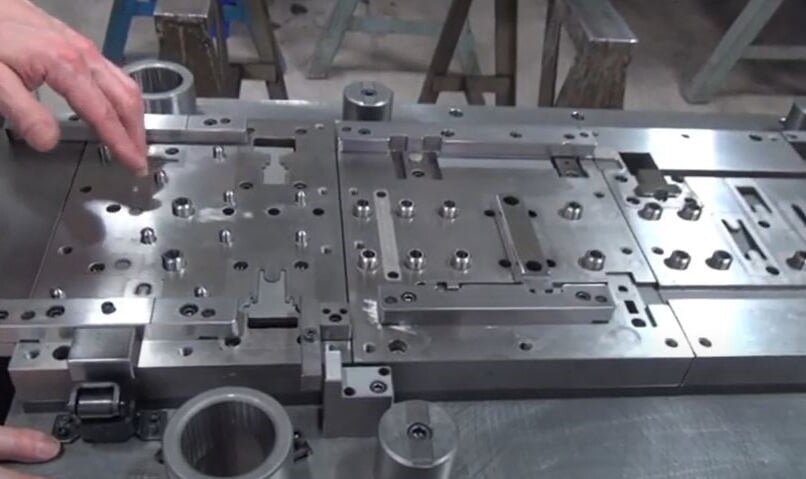
Come funziona lo stampaggio progressivo?
Lo stampaggio progressivo trasforma il metallo in pezzi finiti attraverso fasi precise. Ecco come si svolge il processo dall'inizio alla fine.
Alimentazione in bianco
Il processo inizia con l'alimentazione dello spezzone, dove una striscia continua di metallo (spesso una bobina) viene srotolata e introdotta nello stampo. Un meccanismo di alimentazione tipicamente tira il materiale, assicurando che la striscia si muova costantemente attraverso lo stampo.
Operazione di timbratura
Una volta posizionato il nastro metallico, inizia l'operazione di stampaggio. Questa è la fase primaria, durante la quale il metallo viene sottoposto a vari processi quali punzonatura, piegatura, O formando. Ogni stazione esegue un compito specifico mentre il nastro si muove attraverso lo stampo.
Taglio
Il taglio è un'altra operazione fondamentale nello stampaggio progressivo. Gli strumenti di taglio o i punzoni tagliano il materiale in eccesso dal nastro in punti specifici dello stampo, lasciando la forma desiderata del pezzo.
Raccolta ed espulsione
Una volta che il pezzo è stato completamente stampato, si procede alla raccolta e all'espulsione. I pezzi finiti vengono separati dal nastro rimanente ed espulsi dallo stampo.
Tipi di stampi progressivi
Esistono diversi tipi di matrici progressive, ciascuna progettata per compiti specifici. Esaminiamo i vari tipi di stampi progressivi e le loro differenze.
Stazione singola muore
Le matrici a stazione singola sono il tipo più semplice. Come suggerisce il nome, questi stampi hanno una sola stazione operativa. Questa stazione esegue una sola operazione, come la punzonatura, il taglio o la formatura. Sono ideali per i pezzi più semplici o quando è necessaria una sola operazione.
Stampi multistazione
Le matrici a più stazioni possono eseguire più operazioni in un solo colpo. Ogni stazione svolge un compito diverso. Il nastro di metallo si muove attraverso lo stampo, passando per ogni stazione. Questi stampi sono perfetti per la produzione di grandi volumi, che richiedono diverse fasi per completare il pezzo.
Stampi composti
Gli stampi composti combinano più operazioni in un'unica stazione. Ad esempio, uno stampo composto può praticare un foro e tagliare la forma esterna del pezzo in un'unica corsa della pressa. La riduzione del numero di stazioni necessarie contribuisce a migliorare l'efficienza e la velocità.
Mortai combinati
Gli stampi combinati sono una combinazione di caratteristiche degli stampi composti e degli stampi a più stazioni. Combinano in un unico stampo diversi processi, che possono essere distribuiti su varie stazioni. Ad esempio, una stazione può punzonare un foro mentre un'altra forma una curva.
Vantaggi principali dello stampaggio progressivo
Lo stampaggio con matrice progressiva offre numerosi vantaggi che lo rendono una scelta eccellente per la produzione di parti metalliche di alta qualità su larga scala. Ecco i principali vantaggi che evidenziano l'efficienza e l'efficacia di questo processo.
Produzione ad alta velocità
Uno dei vantaggi più significativi dello stampaggio progressivo è la capacità di produrre pezzi in tempi rapidi. Il processo è continuo e consente di eseguire più operazioni in un unico ciclo, riducendo il tempo necessario per la produzione di ogni pezzo.
Efficienza dei costi
Lo stampaggio a matrice progressiva è conveniente, soprattutto per le grandi produzioni. Poiché il processo utilizza un'alimentazione continua di metallo, non è necessario cambiare frequentemente gli utensili. Ciò riduce i tempi di inattività e i costi di manodopera, con un conseguente risparmio nel tempo.
Precisione e coerenza nella produzione
Ogni pezzo viene realizzato con un elevato livello di dettaglio e accuratezza, assicurando che tutti i componenti soddisfino le specifiche necessarie. L'utensileria precisa e il processo automatizzato assicurano che i pezzi siano di forma e dimensioni costanti.
Versatilità nella progettazione dei pezzi
Lo stampaggio progressivo è versatile per quanto riguarda la progettazione dei pezzi. Può gestire forme e dimensioni diverse, da semplici pezzi piatti a complessi componenti multidimensionali. Questa flessibilità consente ai produttori di produrre progetti dettagliati con un'elevata precisione e tempi di preparazione minimi.
Confronto tra lo stampaggio a stampo progressivo e altri metodi di stampaggio
Quando si sceglie un metodo di stampaggio, è essenziale comprendere le differenze tra le varie tecniche disponibili. Ogni metodo ha i suoi punti di forza ed è adatto a specifiche applicazioni. Confrontiamo lo stampaggio progressivo con altri metodi di stampaggio comunemente utilizzati.
| Metodo di timbratura | Tipo di operazione | Efficienza | Idoneità | Costo |
|---|---|---|---|---|
| Stampaggio progressivo | Operazioni multiple in sequenza in una matrice | Processo continuo ad alta velocità, ideale per la produzione di grandi volumi | Ideale per volumi elevati, pezzi complessi con molteplici funzioni | Efficiente dal punto di vista dei costi per la produzione di grandi volumi |
| Stampaggio a fase singola | Un'operazione per ciclo di stampa | Più lento, meno efficiente per la produzione di alti volumi | Ideale per parti semplici e meno complesse | Meno conveniente per le grandi produzioni |
| Stampaggio a trasferimento | I singoli pezzi grezzi vengono trasferiti tra le stazioni per ogni operazione. | Più lento, con manipolazione e cambio utensile aggiuntivi | Ideale per forme complesse con dettagli intricati | Costo più elevato a causa della gestione aggiuntiva e della complessità |
| Timbratura a quattro slitte | Più diapositive sincronizzate eseguono operazioni simultaneamente | Versatile, ma più lenta della tranciatura progressiva | Ideale per pezzi con curve complesse o movimenti multiasse | Costo più elevato a causa della produzione più lenta e della complessità |
Usi dello stampaggio progressivo
Lo stampaggio con matrice progressiva è un processo produttivo ampiamente utilizzato che svolge un ruolo chiave in diversi settori industriali. Di seguito sono riportati alcuni dei principali settori che beneficiano di questo processo.
Industria automobilistica
Lo stampaggio progressivo è utilizzato per produrre un'ampia gamma di componenti nell'industria automobilistica. Si tratta di staffe, pannelli, componenti del telaio, connettori e piccoli elementi di fissaggio in metallo. La capacità del settore automobilistico di produrre pezzi complessi e precisi in grandi quantità è fondamentale.
Elettronica di consumo
Lo stampaggio progressivo è essenziale anche nell'industria dell'elettronica di consumo, dove precisione e coerenza sono fondamentali. La stampigliatura progressiva è essenziale anche nel settore dell'elettronica di consumo, dove la precisione e la costanza sono fondamentali. involucri per prodotti come smartphone, computer ed elettrodomestici.
Produzione aerospaziale
La produzione aerospaziale richiede componenti leggeri ma anche resistenti e durevoli. Lo stampaggio progressivo risponde a queste esigenze producendo in modo efficiente componenti di aerei e veicoli spaziali come parentesi, supporti strutturali e dispositivi di fissaggio.
Conclusione
Lo stampaggio progressivo è un processo produttivo robusto che aiuta le aziende a produrre parti metalliche di alta qualità in modo efficiente e su scala. Comprendendo il funzionamento di questo processo, i produttori possono ottimizzare i loro processi produttivi, ridurre i costi e migliorare la coerenza dei prodotti.
Se siete alla ricerca di soluzioni produttive efficienti e di alta qualità per il vostro prossimo progetto, siamo qui per aiutarvi! Contattaci per una consulenza personalizzata, e discutiamo di come possiamo ottimizzare il vostro processo di produzione e soddisfare le vostre esigenze specifiche.
Ciao, sono Kevin Lee

Negli ultimi 10 anni mi sono immerso in varie forme di lavorazione della lamiera, condividendo qui le mie esperienze in diverse officine.
Contattate

Kevin Lee
Ho oltre dieci anni di esperienza professionale nella fabbricazione di lamiere, con specializzazione nel taglio laser, nella piegatura, nella saldatura e nelle tecniche di trattamento delle superfici. In qualità di direttore tecnico di Shengen, mi impegno a risolvere sfide produttive complesse e a promuovere innovazione e qualità in ogni progetto.

